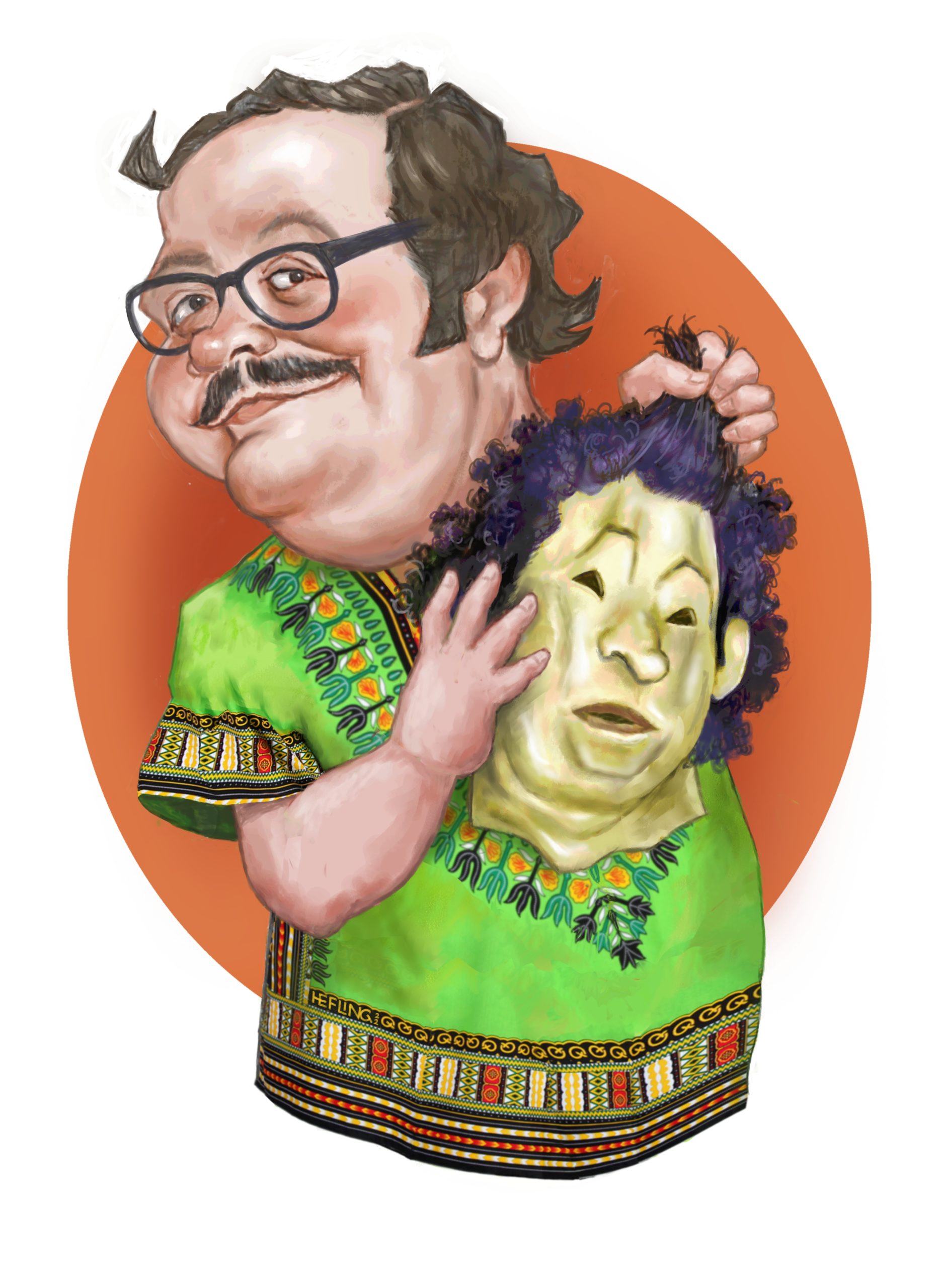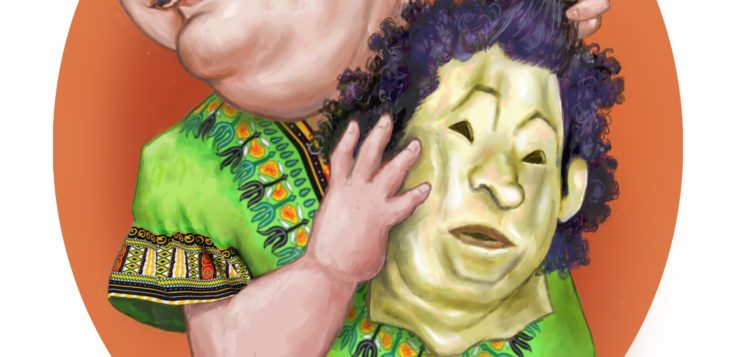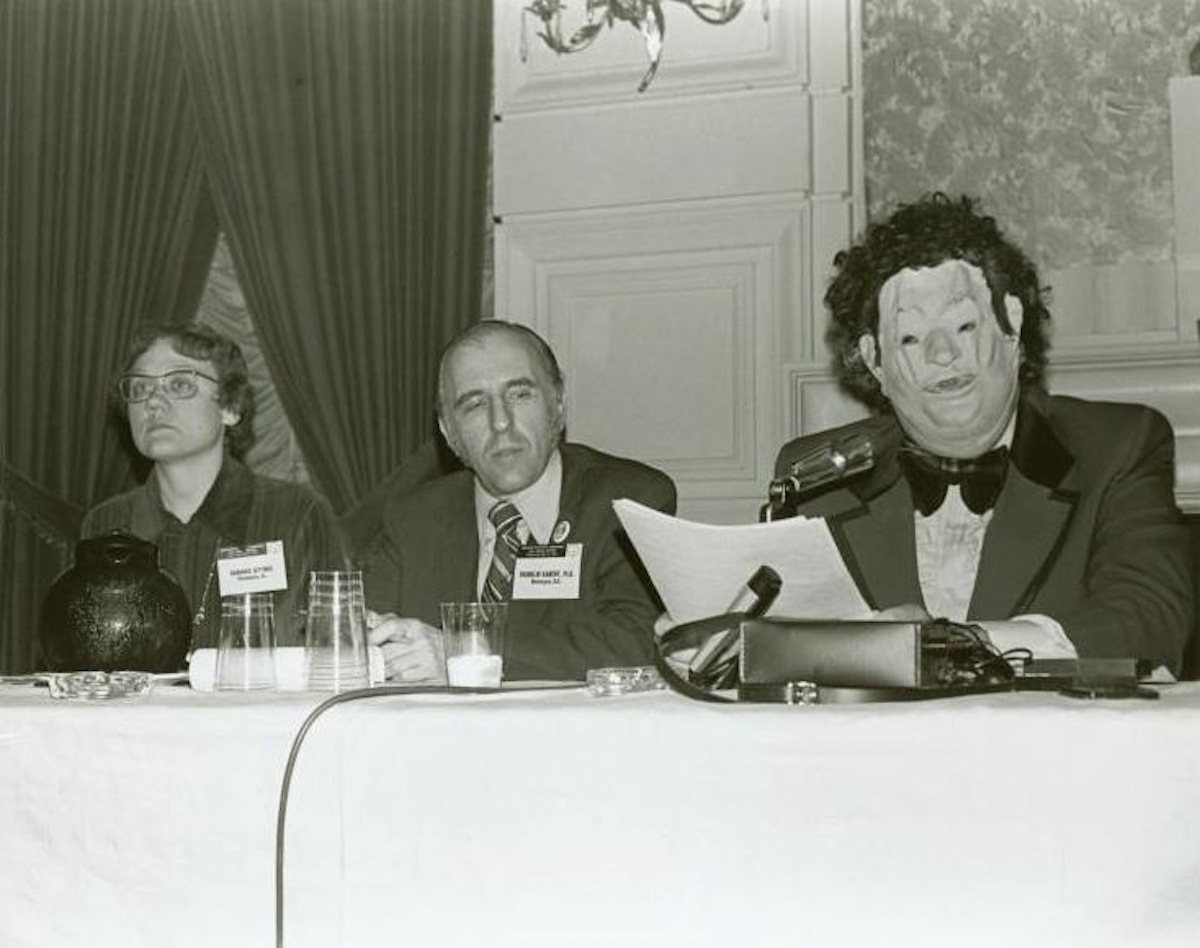Editor’s Note: The following speech by the late Barbara Gittings first appeared in The G&LR’s July-August 2007 issue. The speech was delivered on October 7, 2006, on the occasion of Gittings’ acceptance of the American Psychiatric Association’s Fryer Award for her contribution to GLBT mental health.
WHEN the American movement for full civil rights and equality for homosexuals was launched 56 years ago, we had a huge range of basic problems to tackle. We were denounced as immoral and sinful. We were punished as criminals and lawbreakers. We were labeled “sick” and needing a “cure.” We were mostly invisible as gay, which made it hard for gay men and lesbians to develop good social lives and to create a movement to battle injustice and prejudice.
It’s difficult to explain to anyone who didn’t live through that time, how much homosexuality was under the thumb of psychiatry. The sickness label was an albatross around the neck of our early gay rights groups: it infected all our work on other issues. Anything we said on our own behalf could be dismissed with “That’s just your sickness talking.” The sickness label was used to justify discrimination, especially in employment, and particularly by our own government.
Some brutal methods for curing us in vogue at one time included incarceration in mental hospitals, lobotomies, and aversion therapy. The latter is when they show you pictures of the “wrong” kind of sexual partner and give you an electric shock, say, and then show you pictures of a person you should like and play nice music to persuade you to change your choice of sexual partner. There were, of course, other efforts at curing homosexuality that were less physically brutal, including psychotherapy, but they all thrived on the notion that homosexuality was bad for the individual and for society and should be fixed. (You can see more on this in a 1993 documentary video titled One Nation Under God. While the film is mainly about the faith ministries that try to convert gays to heterosexuality, it’s chock full of anecdotes on psychiatric cures and footage of psychiatrists expounding on how sick homosexuals are.)
Most psychiatrists know about one particular book that popularized the sickness view, namely Homosexuality: A Psychoanalytic Study, published in 1962 and claiming to be a scientific study comparing a group of gay men in psychoanalysis with a group of heterosexual men also in analysis. The authors, including Dr. Irving Bieber, announced at the beginning their belief that homosexuality was pathological, and they worked their meager statistics up, down, and sideways in order to present these beliefs as scientific conclusions.
What a shameful work! More shameful is the fact that it was uncritically accepted at the time. I’m not aware of a single review or comment in the contemporary psychiatric literature that pointed out that the Bieber authors failed to follow scientific methods. This bothered me, so I talked to a psychologist, Dr. Fritz Fluckiger. He wrote a detailed critique of the Bieber study titled “Research through a Glass, Darkly” that was published in 1966 in The Ladder—the magazine of the national lesbian organization Daughters of Bilitis—which I was editing at the time. Unfortunately, Dr. Fluckiger wasn’t an MD analyst, and his review wasn’t published in a professional journal.
But reaction was building to the sickness label’s bad effect on gay individuals’ self-image and on our fight for equality. One of the psychoanalysts who participated in the Bieber study gave a public lecture in December 1964 plainly titled “Homosexuality: A Disease.” Four gay protesters showed up. They demanded and got ten minutes of rebuttal time for their spokesman. Another key event was the anti-sickness statement adopted in 1965 by the Mattachine Society of Washington D.C. and many other gay organizations. Eventually gay groups were demanding official reconsideration of homosexuality as a psychopathology. A petition to the APA appeared in a lesbian newspaper in 1971. We were also taking a proactive stand, saying that “we are the experts on homosexuality.”
Changes in thinking were brewing among psychiatrists, spurred in part by the pioneer work in the 1950s of psychologist Evelyn Hooker (1957), who tested a large sample of gay and straight male subjects and found them equally prone to psychological disorders of all kinds. Psychiatrist Judd Marmor (1965) was especially influential because of his own evolution away from the old orthodoxy. A good account of the developing shift is in Ronald Bayer’s book Homosexuality and American Psychiatry: The Politics of Diagnosis, published in 1981.
Things came to a head in 1970 when gay people invaded several psychiatric meetings, targeting in particular sessions on aversion therapy. Protesters seized microphones and denounced psychiatry for hurting instead of helping us. The angry disrupters said: “Stop talking about us and start talking with us.” Wisely, the APA acted to meet this demand. At its 1971 meeting in Washington, D.C., there was a panel of gay people that included Frank Kameny titled “Lifestyles of Non-Patient Homosexuals.” We jokingly called it “Lifestyles of Impatient Homosexuals,” but it was the first time the APA had acknowledged that there are homosexuals who aren’t in therapy and have no need for it. Also, Frank and I disrupted a lecture on aversion therapy and forced an exhibitor of aversion therapy materials to remove the slides he was selling for use on homosexuals.
The next year, 1972, Frank and I were invited to be on a panel in Dallas called “Psychiatry: Friend or Foe to Homosexuals: A Dialogue.” My partner Kay said: “This isn’t right. Here you have two psychiatrists pitted against two gays, and what you really need is someone who is both.” The panel moderator, Dr. Kent Robinson, agreed to add a gay psychiatrist if we could find one. But who would come forward? Oh how we searched! Kay and I wrote letters and made phone calls around the country. (Remember, no email in those days.)
 At last, John E. Fryer agreed, provided he could wear a wig and mask and use a voice-distorting microphone. Dr. H. Anonymous was born. We smuggled him in his disguise through back corridors and into the packed lecture hall. He really rocked the audience, speaking as a closeted gay person to his own colleagues, telling why he couldn’t be open in his own profession. To back up Fryer, I read excerpts from letters I’d solicited from the other gay psychiatrists who felt they had to decline to be on the panel.
At last, John E. Fryer agreed, provided he could wear a wig and mask and use a voice-distorting microphone. Dr. H. Anonymous was born. We smuggled him in his disguise through back corridors and into the packed lecture hall. He really rocked the audience, speaking as a closeted gay person to his own colleagues, telling why he couldn’t be open in his own profession. To back up Fryer, I read excerpts from letters I’d solicited from the other gay psychiatrists who felt they had to decline to be on the panel.
Also at the 1972 APA meeting, Frank and I were given a booth in the exhibit hall. With much help from friends, I set up an eye-grabbing display under the heading “Gay, Proud, and Healthy: The Homosexual Community Speaks.” Frank wrote the flyer. This exhibit featured the word LOVE in big letters. I think it was the only place in the whole convention where that word LOVE appeared. But there were more eye-openers for the psychiatrists. At the APA’s dinner-dance at the conclusion of the conference, Frank took as his date a gay activist from Dallas named Philip Johnson. And when the band struck up a waltz, Frank and Phil sailed out onto the dance floor. The other heterosexual dance couples all pretended they didn’t see what they saw!
Meanwhile, behind the scenes in APA meetings, the wheels were already turning to consider taking homosexuality off of the list of mental disorders as part of a general revision of The Diagnostic and Statistical Manual. When the Board of Trustees endorsed the recommendation to de-list homosexuality in December 1973, a major Philadelphia newspaper headlined the story: “Homosexuals Gain ‘Instant Cure.’” The trustees also passed a civil rights resolution opposing laws and official discrimination against gay people, which read as follows:
Whereas homosexuality in and of itself implies no impairment in judgment, stability, reliability, or vocational capabilities, therefore, be it resolved that the American Psychiatric Association deplores all public and private discrimination against homosexuals in such areas as employment, housing, public accommodations, and licensing, and declares that no burden of proof of such judgment, capacity, or reliability shall be placed on homosexuals greater than that imposed on any other persons. Further, the APA supports and urges the enactment of civil rights legislation at local, state, and federal levels that would insure homosexual citizens the same protections now guaranteed to others. Further, the APA supports and urges the repeal of all legislation making criminal offenses of sexual acts performed by consenting adults in private.
Of course, a stroke of the pen doesn’t change attitudes. Objections to the “official cure” were contested by psychiatrists who petitioned for a referendum of the full APA membership, which voted in 1974 to endorse the APA board’s decision to de-list. Mindful of the need for continuing education, the APA gave the National Gay Task Force exhibit space at several later conventions. In 1976, in Miami, we did one called “Homophobia: Time for a Cure,” with displays of materials illustrating anti-gay attitudes, policies, and practices. Part of our prescription to cure homophobia included photos of gay couples. Surprisingly, they drew a strong reaction. One dubious doctor asked: “Do these relationships really work?” Many psychiatrists were used to thinking of us as miserable patients with troubled lives, and they needed to see some reality. At this time, gay psychiatrists were coming out of the closet, and had launched a Gay Caucus within the APA, whose newsletter was on hand. Its members helped staff the booth and talked to colleagues.
My last APA exhibit, “Gay Love: Good Medicine,” was in Atlanta in 1978. Again we featured gay people not as patients but as living happy and healthy lives. This time I was able to get five gay psychiatrists who were willing to be in the exhibit with their photos and credentials—quite a breakthrough. The Gay Caucus in APA was now taking steps to become an official subgroup. Still, the closet was emptying only slowly. One psychiatrist wrote a piece on “The Invisible Gay Psychiatrist” for distribution at that 1978 conference. He urged those who couldn’t come out to take other specific steps to push things along. By 1979, the Gay Caucus went fully public by taking part in the gay community’s first National March on Washington.
I am thankful to the American Psychiatric Association and to the Association of Gay and Lesbian Psychiatrists for recognizing my and Frank Kameny’s work toward healing the wounds of prejudice and discrimination. I’m sure John Fryer would be thrilled and deeply gratified, as I am, for having an APA award presented in his name and for the first one going to Frank and myself. By drawing attention to the mask and the damage it does, Dr. H. Anonymous helped tear away disguise and secrecy. He gave courage to his fellow gay and lesbian psychiatrists to be fully themselves and to affirm, in Frank’s great motto, that “Gay Is Good.”
The gay community’s mental health improved dramatically when we spoke up for ourselves and took charge of our own destiny. I’m so glad I was a player in this part of gay history and that I got to know the incomparable John Fryer.
References
Bayer, Ronald. Homosexuality and American Psychiatry: The Politics of Diagnosis. Basic Books, 1981.
Hooker, Evelyn. “The adjustment of the male overt homosexual.” Projective Techniques, 21:18-31, 1957.
Marmor, Judd, ed. Sexual Inversion: The Multiple Roots of Homosexuality. Basic Books, 1965.
Barbara Gittings (1932–2007) was a pioneer in the struggle for gay and lesbian rights starting in the late 1950’s, including her work to reverse the DSM’s “homosexuality” listing.




